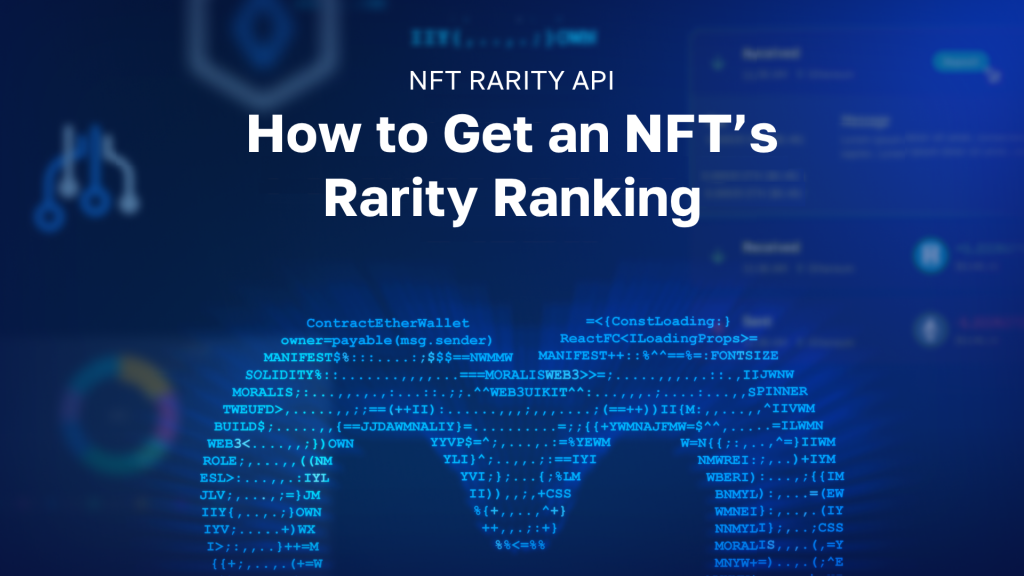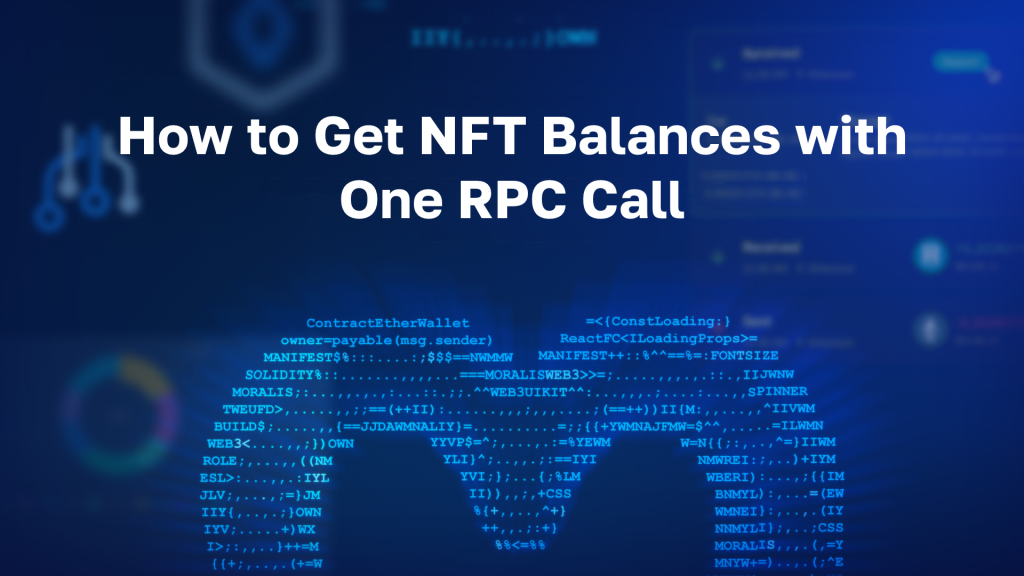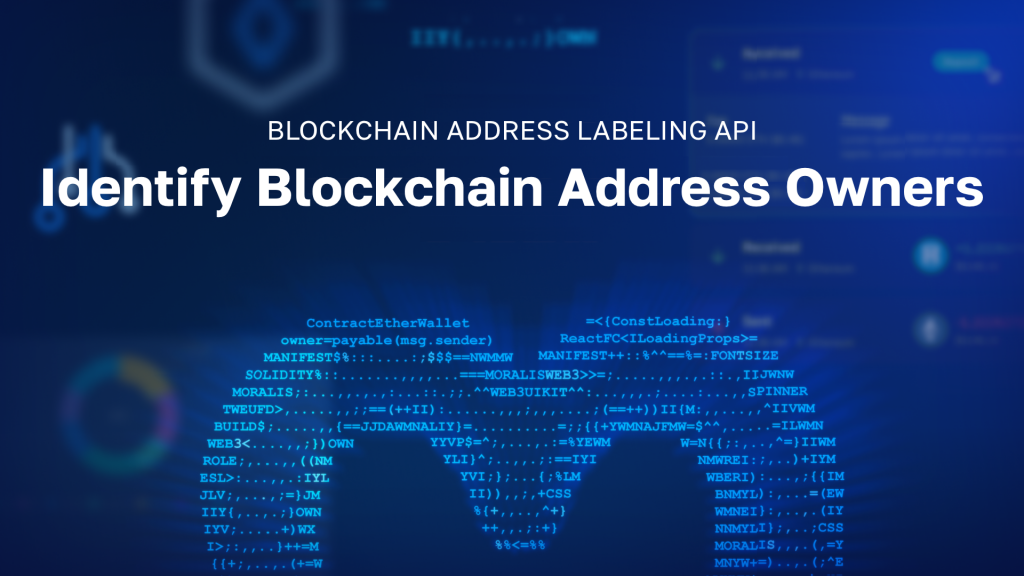As the attentiveness towards NFTs (non-fungible tokens) increases, NFT marketplaces such as OpenSea and other similar platforms are booming. This isn’t strange as the NFT market is becoming increasingly lucrative. Even though Ethereum supports the most extensive ecosystem for dapps and Web3 projects, the network is becoming congested, forcing developers to find alternative, more economical solutions. As such, it’s becoming progressively popular for blockend developers to build NFT projects using the Polygon network. However, even as a popular decentralized scaling platform, building Web3 NFT projects on the network can be quite cumbersome. For this reason, programmers are transitioning to tools such as Polygon NFT APIs as they make blockend development more intuitive. However, what exactly is a Polygon NFT API?
In this article, we’re going to dive deeper into the intricacies of Polygon NFT APIs to provide a better understanding of these development tools. Also, we’re going to take a closer look at Moralis’ NFT API as it, with its cross-chain compatibility, acts as one of the best Polygon NFT APIs on the market. So, if you follow along, we’ll provide you with everything you need regarding Polygon NFT APIs and hopefully make you a more proficient Web3 developer!
Along with the NFT API, Moralis provides additional tools and a fully managed backend infrastructure. Furthermore, the operating system provides you with the essentials for building advanced dapps. For example, you can learn how to create an OpenSea clone to set up your own NFT marketplace.
So, if you’re looking to develop NFT platforms for the decentralized web, create a Moralis account right away! As the premier Web3 development platform, Moralis supplies you with everything you need. What’s more, to start, it’s available to you for free! Now, let’s begin our “Polygon NFT API” journey by looking at NFT API fundamentals!
Polygon NFT API – What is an NFT Application Programming Interface?
To understand what a Polygon NFT API is, we believe it’s beneficial to start by explaining what an NFT API is. Let’s start by examining “API”. API stands for ”applications programming interface”. Further, an API is an intermediary that allows two applications or pieces of software to communicate with one another. Every time you use an application such as Facebook, send a message or check the weather on your device, you’re in contact with an API.
When utilizing a dapp on your computer or phone, the software connects to the internet and transmits data to a server. Once the server retrieves the data, it needs to interpret the information, perform necessary actions, and finally send back a response to your device. It’s then your device’s turn to interpret the data and present it in a readable way. Moreover, this complete process is generally facilitated by an API.
APIs translate or transfer a set of instructions for mutual understanding and ensure reconcilable coding in a safe development environment by delivering functions consistently on request. We can use a restaurant metaphor as an example. The kitchen, in this instance, is the ”system” taking care of your order. However, you don’t generally communicate directly with the kitchen but instead use an intermediary, such as a server. In this analogy, the server is the API facilitating the communication between you and the kitchen. As such, the server delivers your requests/order and then provides you with a response, which in this case is the food.
Now that we have an idea of what an API is, what does it mean in the context of NFTs? An NFT API provides the aforementioned functionality to NFTs. These APIs, therefore, allow developers to fetch backend information about NFTs in more accessible ways, making NFT development significantly more manageable!
What is the Polygon Network?
Before diving deeper into Polygon NFTs and a Polygon NFT API, let’s take a close look at Polygon and the details of this network. A good starting point for understanding why Polygon came to be and why its existence is necessary is to look at the Ethereum network. Ethereum is the most prominent blockchain for Web3 development; however, for quite some time now, the network has experienced issues with congestion. This is an effect of Ethereum’s popularity and the fact that the network hasn’t been equipped for mass adoption.
To solve the congestion issues with Ethereum, so-called ”scaling platforms” or “scaling solutions” have emerged to alleviate the chain, one of which is Polygon. Polygon believes in a “Web3 for all” and is a decentralized Ethereum scaling platform. The network allows developers to build dapps with lower transaction fees while maintaining the same level of security as the Ethereum mainnet.
The native currency of Polygon is called MATIC, and it’s an ERC-20 token, suggesting compatibility with other Ethereum-based cryptocurrencies. The token is used to govern Polygon and as a way to keep the network secure. In addition, it’s used to pay for the low transaction fees that the network facilitates.
Polygon can achieve higher scalability and lower transaction fees due to its PoS (proof-of-stake) consensus mechanism. This mechanism requires network participants to stake their MATIC in exchange for the right to validate network transactions. Validators that complete this task are rewarded with additional MATIC. Unlike Polygon, Ethereum utilizes a PoW (proof-of-work) consensus mechanism, contributing to the scalability issues.
What are Polygon NFTs?
With a better understanding of the Polygon network, and before jumping into the Polygon NFT API, we can move on and look closer at Polygon NFTs. However, we first need to understand NFTs and what these tokens entail.
NFT is an acronym for “non-fungible token”, and, as the name suggests, they are unique. The term “non-fungible” originates from traditional economics and is used to label unique assets such as property, songs, or art. As such, an NFT is essentially a one-of-a-kind token that lives on a blockchain. As uniqueness is a pervading characteristic of these tokens, it makes them ideal for representing assets like the ones we previously mentioned.
Another common token type opposite of an NFT is fungible tokens. These are instead interchangeable assets, and a clear example is a currency. For example, all US dollars are equal to one another, meaning that two can be swapped without compensation. The same goes for ether (ETH) in the crypto industry. One ETH is worth precisely the same as another, suggesting that they are interchangeable. What’s more, there are additional token types, such as semi-fungible tokens. If this sounds interesting, you can read up on the ERC-1155 token standard covering these assets in more detail.
In the context of Polygon, an NFT is basically a token that lives on the Polygon network. The same goes for other networks. An Ethereum NFT is an NFT that lives on the Ethereum network, and so on.
Some of the most popular NFTs that most people have heard of are part of the Bored Ape Yacht Club collection. This is a collection containing thousands of NFTs that, at times, have been bought and sold for astronomical amounts. If this sounds interesting to you, check out our article on how to generate thousands of NFTs.
Moralis’ NFT API – The Ultimate Polygon NFT API
Blockend developers can significantly increase efficiency through the utilization of development tools. One such tool is Moralis’ NFT API, allowing you to create all sorts of NFT-related projects with ease. Furthermore, the NFT API features cross-chain compatibility, meaning that it’s valuable for several different networks such as Ethereum, Binance, and Polygon.
The Moralis NFT API can be described as a normalized cross-chain API enabling you to avoid “reinventing the wheel”, so to speak. As such, this “Polygon NFT API” provides an infrastructure that facilitates communications between your projects and the various blockchains to acquire NFT-related data. This means that you can focus on other parts of the development process, such as creating value for your customers.
Moralis’ NFT API, therefore, makes NFT development on the Polygon network more manageable. However, how does this work, and how does this benefit you as a developer? In the following three sections, we’ll look at how you can acquire Polygon NFT ownership data, metadata, and transfer data quickly and easily. So, without further ado, let’s initiate and explore what type of NFT ownership data is available through the ultimate Polygon NFT API!
Get Polygon NFT Ownership Data
Depending on what type of NFT-related projects you’re looking to create, it can be highly beneficial to access accurate NFT ownership data. You can quickly get Polygon NFT ownership data using Moralis’ NFT API and avoid setting up your own infrastructure to track NFTs. Moreover, you won’t need to worry about customer codes when tokens are traded on a marketplace.
The data regarding Polygon NFT ownership is updated in real-time and is available as soon as a trade is finalized. Remember the NFT collections from a previous section? With the Moralis NFT API, you can acquire all owners of a collection with just a few lines of code.
The API additionally features something known as ”token-gating”. This allows developers to “token-gate” their content with a few simple clicks. As such, creators can take back full control over their content.
Moreover, you can query ownership data like this easily through the following commands:
const options = { address: "", chain: "" };
const nftOwners = await Moralis.Web3API.token.getNFTOwners(options);Get Polygon NFT Metadata
NFTs generally have metadata attached to them that, for example, references digital art or other virtual assets. It’s additionally possible to attach other characteristics and specifications to the metadata of an NFT. As such, NFT metadata is an essential component for these tokens and can be valuable in developing NFT-related platforms, which is why Moralis’ NFT API allows you to query this kind of information.
You would have to manually parse smart contracts without the API, which generally can be quite a tedious task. However, the NFT API takes care of all the heavy lifting of normalizing the data. This means that all you need to do is query the information you’re after. As such, you can retrieve information regarding Polygon NFT metadata with ease.
In addition, Moralis’ NFT API allows you to search inside the metadata of NFTs through so-called ”search endpoints”. This means you can search for specific attributes or descriptions that can be helpful when developing NFT projects. Here is an example of what this might look like through the Moralis Web3 SDK:
const options = { address: "", chain: "" };
const metaData = await Moralis.Web3API.token.getNFTMetadata(options);Get Polygon NFT Transfer Data
Lastly, the final piece of information we’re going to take a closer look at regarding the Polygon NFT API is Polygon NFT transfer data. With the Moralis NFT API, it’s possible to keep track of how NFT transfers occur on a blockchain. You can get transfer information by, for example, searching all token transfers from a particular block. Also, you can search for information based on specific tokens, NFT contract addresses, or wallet addresses. What’s more, this is not restricted to Polygon NFTs as the tool is cross-chain compatible. For this reason, the same functionality is available on additional chains alike. Here is an example of how to acquire NFT transfer data using the API:
const options = { chain: "", address: "", limit: "" };
const transferNFT = await Moralis.Web3API.token.getNFTTransfer(options);So, with the Moralis NFT API, you can avoid the hassles of setting up an infrastructure, hosting worries, and cross-chain development concerns. This will make your life as a developer significantly more accessible, and you’ll be able to create dapps in a fraction of the time.
For more information regarding Moralis’ NFT API, please check out the official NFT API GitHub repository. There, you can discover more about how the API improves your developer experience. However, if you’d rather develop NFT projects for the Binance network, please check out our other guide exploring the Binance NFT API!
What is an Polygon NFT API? – Summary
With the increased usage of the Ethereum network, it’s becoming more attractive to utilize layer-2 scaling solutions such as the Polygon network to avoid excessive gas costs. What’s more, with the increased interest in NFTs, it’s now hotter than ever to develop NFT-related projects. For these two reasons, we took this article to explore Moralis’ Polygon NFT API.
The Polygon NFT API significantly aids in the development process for all NFT projects on the Polygon network. The easiest way to acquire such a tool is through the Moralis NFT API that supports several networks, including Polygon. With the Moralis API, it’s possible to easily fetch NFT ownership data, metadata, and transfer data!
However, this is only one of many benefits of utilizing the Moralis operating system. The underlying backend infrastructure of Moralis, along with additional tools such as Moralis Speedy Nodes, Moralis’ Price API, and the Moralis Metaverse SDK, makes all blockend development significantly more accessible. In fact, through the usage of Moralis, you’ll be able to cut the average development time for all future projects by a whopping 87%!
So, if you’re an aspiring blockend developer, sign up with Moralis and start developing in a matter of minutes!
Moreover, check out Moralis Academy if you’d like to hone your Web3 development skills further. The academy supplies blockchain courses such as JavaScript Programming 101, Moralis Web3 Dapp Programming, Ethereum Fundamentals, etc. So, enroll in the academy and become blockchain certified in no time!







